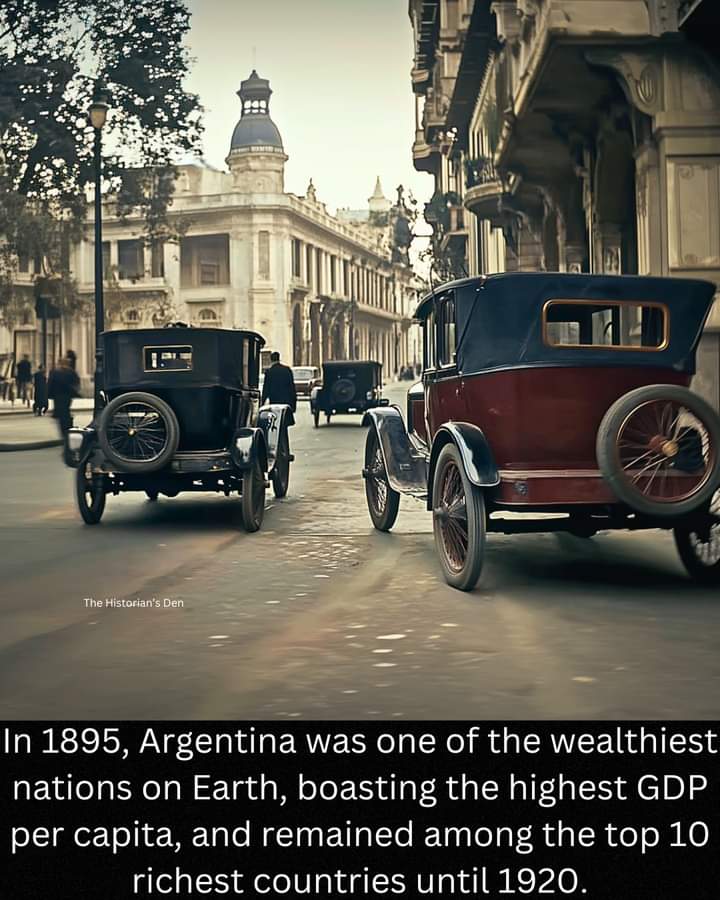In 1895, Argentina stood as one of the world’s wealthiest nations, enjoying the highest GDP per capita at the time. This prosperity was driven by the country’s vast agricultural resources, particularly its fertile pampas, which made Argentina a leading exporter of beef, wheat, and other commodities. European immigrants flocked to Argentina, attracted by its economic opportunities,and the nation quickly modernized, with its capital, Buenos Aires, becoming known as the “Paris of South America” due to its cultural sophistication and architectural grandeur.
Argentina’s economic success continued into the early 20th century, keeping the country among the top 10 richest nations until around 1920. However, political instability, economic mismanagement, and a reliance on commodity exports left Argentina vulnerable to global market fluctuations.
The country began to experience economic decline in the decades following, with periodic crises undermining its once-promising status. Despite its early success, Argentina’s subsequent struggles have made its rise and fall a subject of study and fascination for economists and historians alike.



